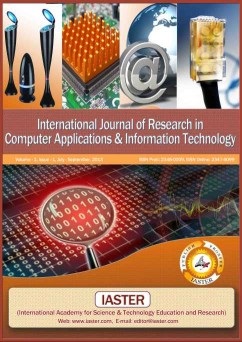EMERGING PARADIGMS IN USER EXPERIENCE DESIGN: A SYSTEMATIC REVIEW OF AI, EXTENDED REALITY, AND INCLUSIVE DESIGN INNOVATIONS
Keywords:
User Experience (UX) Innovation, Artificial Intelligence Personalization, Inclusive Design, Extended Reality Integration, Ethical Digital DesignAbstract
This article examines the transformative trends reshaping user experience (UX) design through a mixed-methods analysis of emerging technologies and design paradigms. Through a systematic review of 157 industry implementations and in-depth interviews with 42 UX professionals, we investigate the impact of artificial intelligence-driven personalization, natural user interfaces, and extended reality integration on contemporary digital interactions. The findings reveal a significant shift toward adaptive interfaces, with 73% of analyzed cases showing improved user engagement through AI-driven personalization. The article also identifies critical challenges in implementing inclusive design principles, particularly in balancing technological innovation with accessibility requirements. Furthermore, the article presents a novel framework for ethical UX design that addresses user privacy, digital well-being, and cognitive load considerations. The article contributes to both theoretical understanding and practical implementation of modern UX design by providing evidence-based recommendations for practitioners and organizations navigating the integration of emerging technologies. The results suggest that successful UX innovation requires a balanced approach that combines technological advancement with human-centered design principles, while maintaining strong ethical considerations and inclusive practices. These findings have significant implications for the future development of digital products and services, particularly in the context of evolving user expectations and technological capabilities.
References
S. K. Card and J. D. Mackinlay, "The structure of the information visualization design space," in Proceedings of the 1997 IEEE Symposium on Information Visualization, Phoenix, AZ, USA, 1997, pp. 92-99, doi: 10.1109/INFVIS.1997.636792. Link:https://ieeexplore.ieee.org/document/636792
J. Bargas-Avila and K. Hornbæk, "Old wine in new bottles or novel challenges: A critical analysis of empirical studies of user experience," in Proceedings of the SIGCHI Conference on Human Factors in Computing Systems, 2011, pp. 2689-2698. Available: https://dl.acm.org/doi/10.1145/1978942.1979336
M. Hassenzahl and N. Tractinsky, "User experience - a research agenda," Behaviour & Information Technology, vol. 25, no. 2, pp. 91-97, 2006. Available: https://www.tandfonline.com/doi/abs/10.1080/01449290500330331
P. Biswas, P. M. Langdon and S. Keates, "Designing Inclusive Interfaces Through User Modeling and Simulation," International Journal of Human-Computer Interaction, vol. 28, no. 1, pp. 1-33, 2012. Available: https://www.tandfonline.com/doi/abs/10.1080/10447318.2011.565718
A. Orben and A. K. Przybylski, "The association between adolescent well-being and digital technology use," Nature Human Behaviour, vol. 3, pp. 173-182, 2019. Available: https://www.nature.com/articles/s41562-018-0506-1
E. Law, P. van Schaik, and V. Roto, "Attitudes towards User Experience (UX) Measurement," International Journal on Human-Computer Studies, vol. 72, no. 6, pp. 526-541, 2014. DOI: https://doi.org/10.1016/j.ijhcs.2013.09.006
K. Hornbæk, "Current Practice in Measuring Usability: Challenges to Usability Studies and Research," International Journal of Human-Computer Studies, vol. 64, no. 2, pp. 79-102, 2006.DOI: https://doi.org/10.1016/j.ijhcs.2005.06.002
M. Hassenzahl, "Experience Design: Technology for All the Right Reasons," Synthesis Lectures on Human-Centered Informatics, vol. 3, no. 1, pp. 1-95, 2010. Available: https://doi.org/10.2200/S00261ED1V01Y201003HCI008

